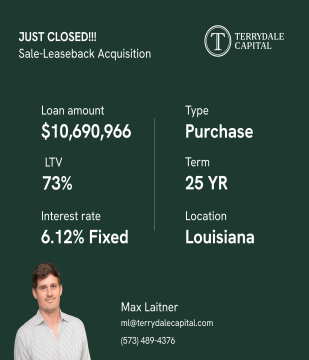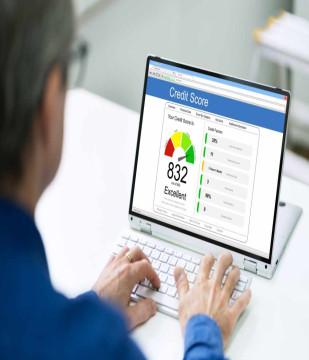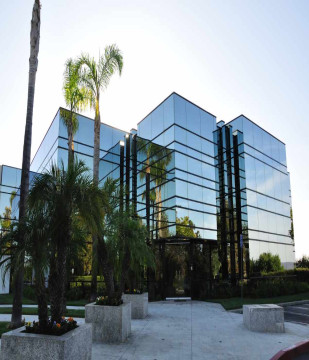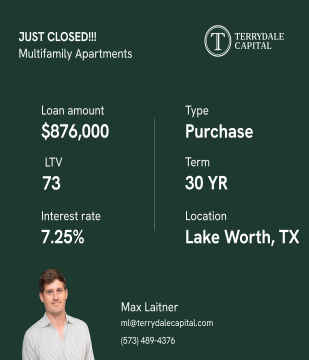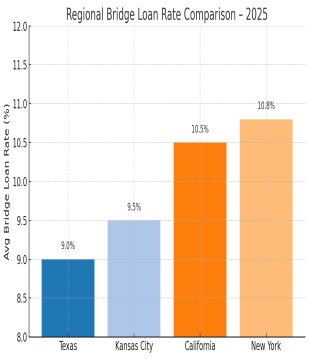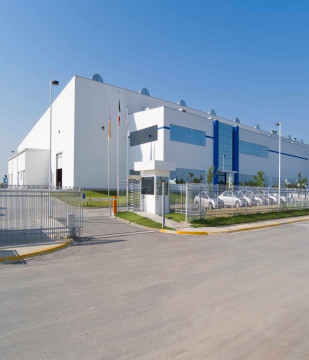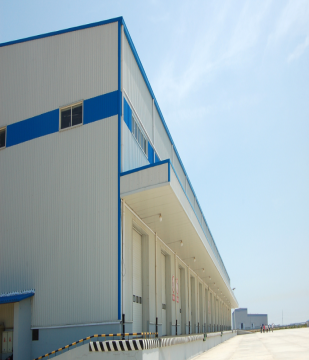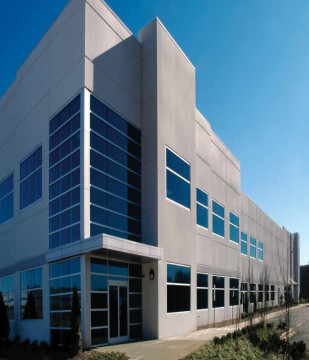Commercial Real Estate Key Terms

Terrydale Capital
Jul 18, 2023 51 Min read
 Learn
Learn
1031 Exchange: A 1031 Exchange, also known as a like-kind exchange or a Starker exchange, is a tax-deferral strategy that allows investors to sell a property and defer paying capital gains taxes on the sale by using the proceeds to purchase a "like-kind" property. The exchange must be completed within specific timeframes and guidelines set by the IRS in order to qualify for the tax deferment.
Absorption: Absorption refers to the rate at which commercial properties are being occupied or leased in a specific market over a certain period of time, typically a year. It is reported as the number of units or square footage of a specific property type that become occupied during that period. A high absorption rate indicates a strong demand for commercial real estate in that market, while a low absorption rate may indicate a surplus of available properties.
Accumulated Cost Recovery: Accumulated cost recovery refers to the total amount of cost recovery deductions taken throughout the holding period of a property. This can include deductions for depreciation, amortization, and other expenses related to the property. These deductions can be used to offset the income from the property, reducing the overall tax liability for the property owner.
Acquisition Loan: An acquisition loan is a loan that is used to purchase a commercial property. These loans typically have higher interest rates and stricter lending criteria than traditional mortgages.
Active Income: Active income refers to income earned from activities in which the taxpayer is actively involved, such as a salary, wages, tips, commissions, and other forms of earned income. This is in contrast to passive income, which is generated from investments or rental properties without the need for active involvement.
Add Value: "Add value" refers to the fourth stage of a four-stage transaction management process, in which a transaction manager plans, makes effort, and continually communicates with key decision-makers, investors, and users, as well as other professionals involved in a transaction. This ongoing process allows for feedback, establishes a network for problem solving, provides a means to offer additional services to the client, and enhances the transaction manager’s preparedness for the next assignment. The goal of this stage is to increase the value of the transaction for the client.
Add-On Factor: The add-on factor, also known as the load factor or rentable-to-useable ratio, is a calculation used to determine the proportion of rentable square footage to useable square footage in a commercial property. The formula is: Add-on factor = Rentable square feet / Useable square feet. This calculation can be used to determine the efficiency of a property and how much additional rentable space is available for lease.
Agency Lender: An agency lender is a type of lender that is sponsored or regulated by a government agency, such as the Federal National Mortgage Association (Fannie Mae) or the Federal Home Loan Mortgage Corporation (Freddie Mac). These agencies were created by the U.S. government to provide a secondary market for home mortgages. They purchase mortgages from primary lenders, such as banks, and package them into securities that are sold to investors. By doing this, agency lenders provide liquidity to the mortgage market and make it easier for borrowers to obtain financing. Agency lenders typically have more stringent underwriting guidelines and requirements than traditional lenders, and they may offer lower interest rates, but they have a limit on the loan amount.
Amortization: Amortization is the process of paying off a loan over time through a series of equal payments that include both principal and interest. The payments are structured so that a larger portion of the payment is applied to the interest in the early years of the loan, with a gradually increasing portion applied to the principal over time. This results in the loan being fully repaid by the end of the amortization period.
Appraisal: A commercial real estate appraisal is a professional and unbiased estimate of the value of a commercial property, typically performed by a licensed and certified appraiser. The appraisal process involves the appraiser analyzing various aspects of the property and the market conditions in order to determine an estimate of the property's fair market value. This includes evaluating factors such as the property's location, condition, income-producing potential, and comparable sales of similar properties in the area. The appraisal is typically used by lenders, investors, and property owners to make informed decisions about buying, selling, or financing commercial real estate. In addition, appraisal is also used for tax and insurance purposes, and in some cases, in legal disputes.
Balloon Payment: A balloon payment is a lump sum payment that is due at the end of a loan term, typically used in situations where the borrower is unable to refinance the loan or pay off the remaining balance in full. This payment typically represents the remaining principal balance of the loan and is often significantly higher than the regular payments made during the loan term.
Break Even Point: The breakeven point is the point at which a property's income covers all of its operating expenses, including the annual mortgage payment. It is calculated by dividing the total of the operating expenses plus the annual mortgage by the gross potential income. A property that has not yet reached its breakeven point is not yet generating a positive cash flow.
Bridge Loan: A bridge loan is a short-term loan that is used to "bridge" the gap between the purchase of a property and the permanent financing or sale of the property. These loans are typically used when a borrower is in the process of selling their current property and needs to purchase a new property before the sale is completed.
Broker: A broker is an agent who acts as an intermediary between a company or person during the buying or selling process. Real estate brokers specialize in the sale of commercial and residential properties and can assist buyers and sellers with finding properties, negotiating deals, and handling paperwork.
Broker Fee: A broker fee is a fee that is charged by a real estate broker for their services in arranging the sale or lease of a commercial property. This fee is typically a percentage of the sale or lease price of the property.
Built-to-Suit: Build-to-suit refers to a property that is built specifically for a tenant to occupy. The tenant typically works with the developer to design and construct the property to meet their specific needs, and will often enter into a long-term lease for the property.
Cap Ex: Capital expenditures (Cap Ex) are funds used by a company to acquire or upgrade physical assets such as property, buildings, or equipment. In the context of commercial real estate, Cap Ex can refer to funds used to improve or maintain a property.
CAP Rate: Capitalization rates, or cap rates, are measures used to estimate and compare the rates of return on multiple commercial real estate properties. They are calculated by dividing the property's net operating income (NOI) by its property asset value. A higher cap rate typically indicates a higher return on investment, while a lower cap rate may indicate a lower return or more risk.
Capital: Capital refers to the money or assets that a business has available to invest in new projects, expand operations, or cover short-term expenses. It can also refer to the total value of a company's assets, including cash, investments, and property.
Cash Flow: Cash flow is the sum of the after-tax profit of a business plus depreciation and other non-cash charges, used as an indication of internal funds available for stock dividends, purchase of buildings and equipment, etc. In the context of commercial real estate, cash flow is typically calculated as the net operating income minus debt service.
Cash-on-Cash Return: The cash on cash return is a rate of return ratio that equals the cash earned on the total cash investment in a deal. It is calculated by dividing the annual cash flow by the down payment.
Cash-Out Refinance: A cash-out refinance is a type of refinance in which the borrower takes out a new loan that is larger than the outstanding balance on their current loan and uses the difference to pay off the old loan and to receive cash. This type of refinance can be used to access the equity in the property, to make improvements or repairs, or to pay off other debts.
CMBS Loans: Commercial Mortgage-Backed Securities (CMBS) loans are a type of commercial real estate financing in which a pool of mortgages are bundled together and sold as securities to investors. These loans are typically used to finance larger commercial properties such as office buildings, shopping centers, and hotels.
Commercial Real Estate Closing Process: The commercial real estate closing process refers to the series of steps and procedures that are followed in order to finalize the purchase or sale of a commercial property. This process typically includes due diligence, the negotiation of terms and conditions, the execution of legal documents, and the transfer of funds and title.
Debt Financing: Debt financing refers to the process of raising capital by borrowing money and agreeing to pay it back over time, typically with interest. In the context of commercial real estate, debt financing can include mortgages, mezzanine debt, and other types of loans.
Debt Fund: Debt funds in commercial real estate are investment vehicles that provide financing to real estate projects. Unlike equity funds, which focus on owning a stake in properties, debt funds primarily function as lenders, offering loans to developers, property owners, or sponsors.
Debt Service Coverage Ratio (DSCR): The debt service coverage ratio (DSCR) is a measure of a property's ability to generate enough income to cover its debt.
Debt Yield: Debt yield is a measure of a property's ability to generate enough income to cover its debt service. It is calculated by dividing the annual net operating income (NOI) by the total loan amount. A higher debt yield indicates that a property is generating more income relative to the size of its mortgage, and is therefore considered a safer investment.
Defeasance: Defeasance is the process of replacing the income from an investment property, typically a commercial property, with income from government bonds, in order to pay off the outstanding loan on the property without selling the property. This process allows the property owner to retain ownership of the property while eliminating the debt associated with it.
Due Diligence: Equity financing refers to the process of raising capital by selling ownership shares in a company or property. This can include the sale of stock in a publicly traded company, or the sale of shares in a private company or real estate investment. Equity financing allows investors to share in the potential profits of the company or property, but also bears the risk of loss if the investment does not perform well.
Equity Financing: Equity financing refers to the process of raising capital by selling ownership shares in a company or property. This can include the sale of stock in a publicly traded company, or the sale of shares in a private company or real estate investment. Equity financing allows investors to share in the potential profits of the company or property, but also bears the risk of loss if the investment does not perform well.
Family Office: A family office is a private wealth management firm that provides financial, investment, and administrative services to high-net-worth individuals and families. They can also provide legal and tax advice as well as manage real estate properties, art collections and other assets, as well as provide philanthropic and estate planning services.
Fannie Mae: Fannie Mae (Federal National Mortgage Association) is another government-sponsored enterprise (GSE) created by the U.S. Congress in 1938, with similar goals and function as Freddie Mac. Fannie Mae also buys mortgages from primary lenders and packages them into securities that are sold to investors. Its mission is to support liquidity and stability in the secondary mortgage market, and to help ensure that mortgage credit is available to all Americans.
Fixed Rate: A fixed rate is an interest rate that stays the same throughout the loan term. These types of loans are desirable for borrowers who want to budget for the same mortgage payment over the entire life of the loan. Fixed rate loans tend to have higher interest rates than adjustable-rate loans.
Freddie Mac: Freddie Mac (Federal Home Loan Mortgage Corporation) is a government-sponsored enterprise (GSE) created by the U.S. Congress in 1970 to provide a secondary market for home mortgages. It buys mortgages from primary lenders, such as banks, and packages them into securities that are sold to investors. The goal of Freddie Mac is to increase the availability and affordability of home financing, and to stabilize the nation's residential mortgage markets.
General Partnership: A general partnership is a type of partnership in which all partners have equal rights and responsibilities, including the management of the business and the sharing of profits and losses. Each partner is personally liable for the debts and obligations of the partnership.
Hard Money: Hard money loans are a type of real estate financing in which the lender uses the value of the property as collateral rather than the creditworthiness of the borrower. These loans are typically used for short-term, high-risk investments such as fix-and-flip projects and are characterized by higher interest rates and shorter loan terms.
Interest Only (I/O): An interest-only loan is a type of loan in which the borrower is only required to make interest payments during a designated period of the loan term. This can be beneficial for borrowers who are not yet in a position to afford the higher payments associated with paying down the principal of the loan.
Internal Rate of Return: The internal rate of return (IRR) is a measure of the profitability of an investment, calculated as the discount rate at which the net present value of the investment's cash flows equals zero. It is often used to compare the relative profitability of different investments and to determine the minimum acceptable rate of return.
Joint Venture: A joint venture is a type of business arrangement in which two or more parties agree to combine their resources and expertise to achieve a specific business goal. The partners share in the profits and losses of the venture in proportion to their investment.
K 1’s: K-1 IRS documents are tax forms that are issued to shareholders of a partnership or investors in a limited liability company (LLC) that reports their share of the partnership or LLC's income, deductions, credits, etc. These documents are used to report the investor's share of the income and deductions from the partnership or LLC on their individual tax return.
Leverage: Leverage refers to the use of debt or other borrowed funds to increase the potential return on an investment. This can include using debt to purchase property or other investments. Leverage can increase the potential returns on an investment, but it also increases the risk of loss if the investment does not perform as expected.
LIBOR: LIBOR stands for London Interbank Offered Rate. It is a benchmark interest rate that is used as a reference rate for short-term lending between banks in the London Interbank market. It is used by banks, money market funds, and other financial institutions to set the rates they charge for loans and is a reference rate for derivatives and other financial products.
Limited Liability Partnership: A limited liability partnership (LLP) is a type of partnership in which the partners have limited personal liability for the debts and obligations of the partnership. This means that the partners are not personally liable for the actions of the other partners or for any debts or obligations of the partnership. The partners share in the profits and losses of the partnership in proportion to their investment.
Limited Partnership: A limited partnership is a type of partnership in which there are both general partners and limited partners. The general partners manage the business and are personally liable for the debts and obligations of the partnership, while the limited partners are only liable to the extent of their investment in the partnership. Limited partners do not have the right to manage the business, but they have the right to share in the profits and losses of the partnership in proportion to their investment.
Liquidity: Liquidity refers to the ability of a business to convert its assets into cash quickly and easily in order to meet its financial obligations. A business with high liquidity is able to pay its bills and meet other financial obligations as they come due.
Loan Package: A loan package is a set of documents and information that is submitted to a lender as part of a loan application. The loan package will typically include financial statements, personal and business tax returns, credit reports, and other information that is used to evaluate the borrower's creditworthiness and the risk of the loan.
Loan-to-Cost (LTC): Loan-to-cost (LTC) is a ratio used to determine the size of a construction loan relative to the total cost of a construction project. It is calculated by dividing the loan amount by the sum of the purchase price, closing costs, and construction costs.
Loan-to-Value (LTV): Loan-to-Value (LTV) is a ratio that compares the loan amount to the appraised value of a property. It is calculated by dividing the loan amount by the appraised value of the property. LTV is often used by lenders to determine the risk of a loan and to set the terms and interest rate of the loan. A higher LTV ratio may indicate a higher risk to the lender and may result in more stringent loan terms and a higher interest rate.
Line of Credit (LOC): A line of credit (LOC) is a type of loan that allows the borrower to access funds as needed up to a certain limit. The borrower only pays interest on the amount they borrow, and they can borrow and repay the funds multiple times. This type of loan is often used by businesses to cover short-term expenses or unexpected costs.
LOI: A letter of intent (LOI) is a non-binding document outlining the key terms and conditions of a proposed transaction, typically used in the commercial real estate industry to indicate a party's intention to move forward with a purchase or lease agreement.
MEC: Mutually Executed Contract (MEC) is a contract between parties that has been mutually agreed upon and signed by both parties. It is a legally binding agreement that outlines the terms and conditions of a transaction, such as the sale or leasing of commercial property.
Mezzanine Debt: Mezzanine debt is a type of debt financing that is typically used to finance the acquisition, construction, or renovation of commercial properties. It is a form of junior debt that sits in between the senior debt (i.e. the first mortgage) and equity in the capital structure of a property. Mezzanine debt often carries a higher interest rate than senior debt because it is considered to be higher risk.
Net Operating Income (NOI): A financial metric used to measure the profitability of a commercial real estate property. It represents the income a property generates after operating expenses, such as property management, insurance, and taxes, have been subtracted. The NOI is calculated by taking the property's gross income (rental income, for example) and subtracting the operating expenses (property management, insurance, taxes, etc.). The result is the net operating income, which is used to determine the cash flow available to the property owner or investor.
Non-Recourse Loan: A non-recourse loan is a type of loan in which the borrower is not personally liable for any outstanding loan proceeds. In the event of default, the lender can only look to the property as collateral and cannot pursue the borrower for any remaining balance. This type of loan is typically used in commercial real estate transactions.
Off-Market: Off-market refers to a property that is not actively being marketed or advertised for sale or lease, but may still be available for purchase or lease through private negotiations.
On-Market: On-market refers to a property that is actively being marketed and advertised for sale or lease by the owner or their agent. It is available for purchase or lease by the public.
Owner-User: Owner-User refers to a property that is occupied and used primarily by the owner of the property, rather than being leased or rented to tenants. In the context of commercial real estate, this can refer to a business that operates out of a property that is owned by the business owner.
P&L: P&L stands for Profit and Loss. It is a financial statement that shows a company's revenues, costs, and expenses over a period of time. P&L statements are useful for businesses to evaluate their financial performance, and are often used to determine the profitability of a commercial real estate property.
Partnership: A partnership is a type of business entity in which two or more people or organizations share ownership and management of the business. Partners share profits and losses, and are personally liable for the debts and obligations of the partnership.
Passive Income: Passive income refers to income that is generated without the need for active participation. This can include rental income from a property, dividends from stocks, or interest income from a savings account. In the context of commercial real estate, passive income can be generated through owning and renting out properties.
PFS: Personal Financial Statements (PFS) are documents that provide a detailed overview of an individual's financial position, including their assets, liabilities, and net worth. These statements are often used by lenders as part of the loan application process to assess an individual's creditworthiness and ability to repay the loan.
Phase 1 Inspection: A Phase 1 Inspection is an environmental assessment of a commercial property. It is typically done when a property is being sold or financed. The Phase 1 Inspection assesses the potential presence of any hazardous materials, such as asbestos or lead-based paint. It also examines the potential for environmental contamination from past uses, such as industrial activities or underground storage tanks.
Preferred Equity: Preferred equity is a type of equity investment in which the investor receives a preferred return on their investment before any returns are distributed to common equity holders. This type of equity is often used in commercial real estate transactions as a way to provide additional financing while maintaining a lower debt-to-equity ratio.
Prepayment Penalties: A prepayment penalty is a fee that is charged to a borrower who pays off their loan before the loan term expires. The fee is intended to compensate the lender for the loss of interest income that would have been earned if the loan had been kept in place for the full term. These penalties can be calculated in a variety of ways, such as a percentage of the outstanding loan balance or as a fixed dollar amount.
Prime Rate: The prime rate is a benchmark interest rate that is used as a reference rate for short-term lending, typically for credit cards, home equity lines of credit, and other consumer loans. It is based on the federal funds rate and is typically set by the Federal Reserve. Banks generally use the prime rate as a base rate for determining the interest rates they charge to their customers.
Private Money Lender: A private money lender is an individual or a group of individuals that provide loans for real estate transactions, typically for short-term projects. They are not regulated by government institutions and often provide loans with higher interest rates than traditional lenders. They are also more flexible in terms of their lending criteria and can provide loans more quickly than traditional lenders.
Pro Forma: Pro Forma is a financial statement that estimates the future financial performance of a company or property, based on certain assumptions. Pro Forma financial statements are often used in real estate transactions, such as to estimate future cash flows or income from a property. They are also used to estimate the financial impact of proposed changes, such as the construction of a new building or the acquisition of a new property.
PSF: PSF stands for "per square footage." This term is commonly used in commercial real estate to express pricing or costs on a per square footage basis, such as rent or construction costs.
Recourse Loan: A recourse loan is a type of loan in which the borrower is personally liable for any outstanding loan proceeds. In the event of default, the lender can pursue the borrower for any remaining balance in addition to foreclosing on the property as collateral. This is in contrast to a non-recourse loan.
Refinance: Refinance refers to the process of obtaining a new loan in order to pay off an existing loan. This can be done to take advantage of lower interest rates, to extend the term of the loan, or to change the loan's terms and conditions. In the context of commercial real estate, refinance can be done to improve cash flow, lower monthly payments, or to take cash out of the property.
REIT: REIT stands for Real Estate Investment Trust. REITs are companies that own and operate commercial properties, such as office buildings, shopping centers, and apartment buildings. They are publicly traded on stock exchanges, and investors can buy shares in the REIT to gain exposure to the commercial real estate market.
Replacement Reserves: reserves are what lenders will utilize in their underwriting to add an additional buffer to their risk profile when analyzing the financial performance of the property. This is always included in the proforma column of the underwriting template, never included in the historical financials.
Retention Agreement: A retention agreement is a contract between an employer and an employee in which the employee agrees to remain with the company for a specific period of time in exchange for a bonus or other compensation. This type of agreement is often used to retain key employees in the commercial real estate industry.
RFP: RFP stands for "request for proposal." This is a formal process in which a company or organization solicits proposals from potential vendors or contractors to provide a specific product or service. In the context of commercial real estate, an RFP may be used to solicit proposals from potential developers or construction companies for a specific project.
ROI: ROI stands for "return on investment." This is a financial metric used to measure the profitability of an investment. It is calculated by dividing the net gain from an investment by the initial cost of the investment. In the context of commercial real estate, ROI can be used to measure the profitability of a specific property or portfolio of properties.
RSF: RSF stands for "rentable square footage." This term refers to the total amount of square footage that is available for rent in a commercial property. This can include both the usable square footage (the actual space that is available for a tenant to occupy) as well as any common areas or shared spaces.
SBA Loan: SBA loan stands for Small Business Administration loan. SBA loans are government-guaranteed loans that are designed to help small businesses access the financing they need to start, grow, or expand. These loans are provided through participating banks and other lending institutions and are backed by the SBA.
SFR Portfolio: A SFR (Single Family Rental) Portfolio refers to a group of single-family homes that are owned and managed as rental properties. These homes may be purchased by an individual or organization and then leased to tenants on a long-term basis. The SFR portfolio can be considered as an alternative to traditional multi-family rental properties, such as apartments. The main difference is that SFR portfolio is a collection of single-family homes that are individually owned and managed, rather than a single multi-unit building. SFR portfolios are becoming an increasingly popular investment option for investors looking for a steady stream of rental income and potential appreciation in property values.
SOFR: SOFR stands for Secured Overnight Financing Rate. It is a benchmark interest rate for short-term lending in the US that is calculated based on the overnight lending rate of US Treasury Securities. It is used by banks, money market funds, and other financial institutions to set the rates they charge for loans and is a reference rate for derivatives and other financial products.
Stress Test: this refers to the LTV, interest rate, and amortization levels utilized to analyze the underwriting. Different lenders have different stress tests. You should always prepare an analysis with a ‘buffered’ stress test above what loan terms are actually achievable.
Tenant Improvements: Tenant Improvements (TI) refers to any changes or upgrades made to a commercial property by a landlord to accommodate a tenant's specific needs or requirements. These changes can include things like building out office space, installing new flooring or lighting, or making structural changes to the property. The goal of tenant improvements is to make the space more usable for the tenant and to attract them to rent the space. Often, landlords will offer tenant improvement allowances to entice potential tenants to sign a lease.
Triple Net Lease: A triple net lease is a type of commercial lease in which the tenant is responsible for paying all of the expenses associated with the property, in addition to the base rent. These expenses typically include property taxes, insurance, and common area maintenance. This type of lease is often used for properties such as retail stores or office buildings where the tenant is the primary user of the property and its associated expenses.
TTM or T12 (Trailing 12 Month Financials): this column refers to analyzing the most recent 12 months of financial performance on the property.
T3M (Trailing 3 Months Financials): this column refers to analyzing the most recent 3 months of the property, then annualizing that number to project the next 9 months. Sometimes you analyze T6, T3, T2 - whatever is available.
Underwriting: Underwriting is the process of evaluating the risk of a loan or investment. This includes evaluating the borrower's creditworthiness, the property's value and income potential, and the overall market conditions.
Yield Maintenance: Yield maintenance is a type of prepayment penalty that is intended to compensate the lender for the loss of interest income that would have been earned if the loan had been kept in place for the full term. It is calculated by taking the net present value of the interest the lender would have received over the remaining loan term.
Partner With Terrydale Capital for Your Debt Financing Needs
When it comes to debt financing, understanding the right timing, process, and options is crucial. At Terrydale Capital, we provide a comprehensive range of commercial loan solutions tailored to meet your business's unique needs.




